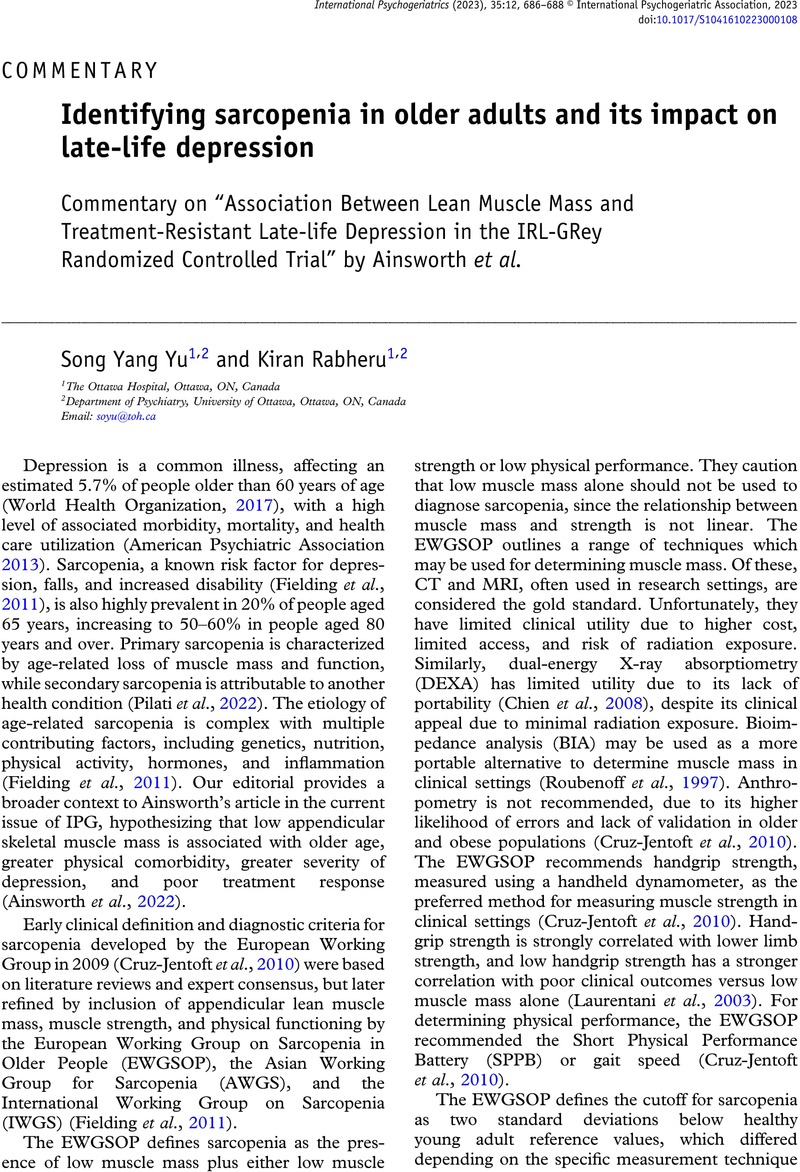Crossref Citations
This article has been cited by the following publications. This list is generated based on data provided by Crossref.
Lv, Zhengtao
Zhao, Yingchao
Cui, Jiarui
and
Zhang, Jiaming
2024.
Genetically Proxied Sarcopenia-Related Muscle Traits and Depression: Evidence from the FinnGen Cohort.
The American Journal of Geriatric Psychiatry,
Vol. 32,
Issue. 1,
p.
32.



